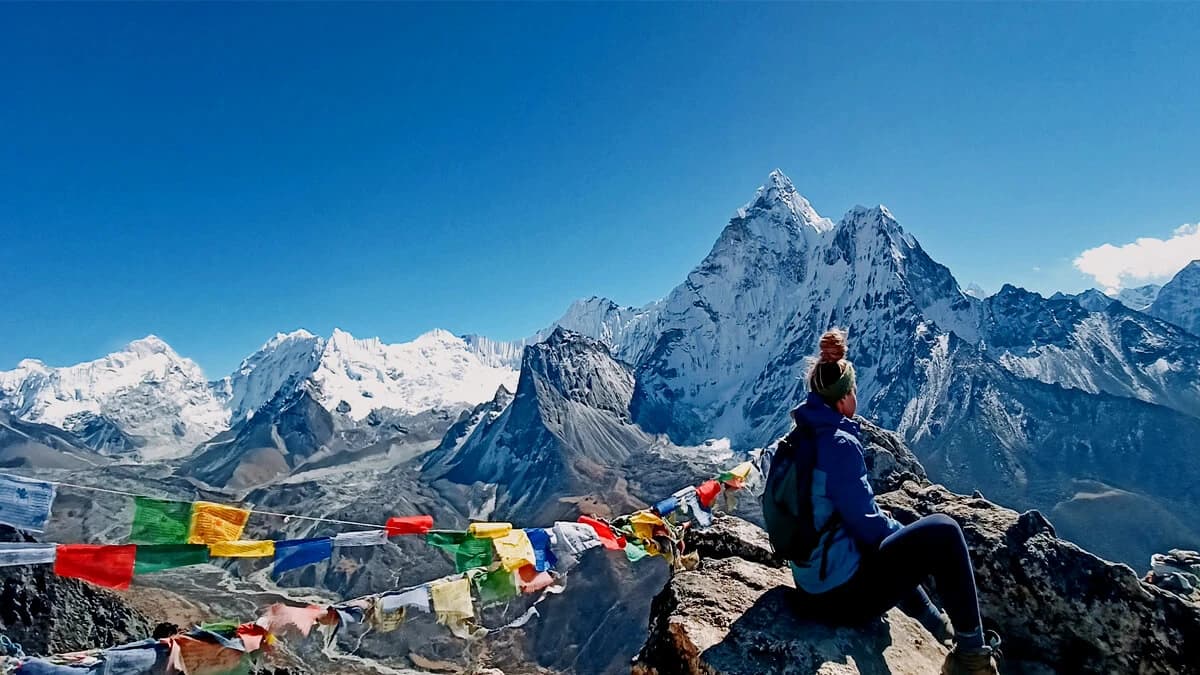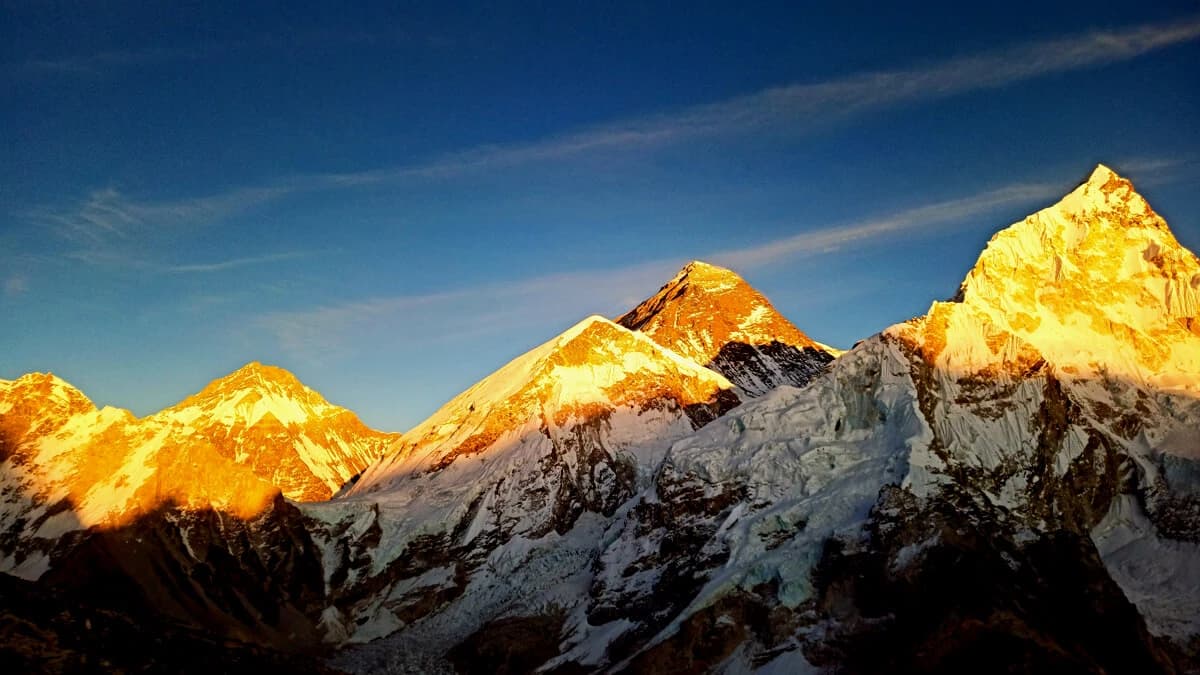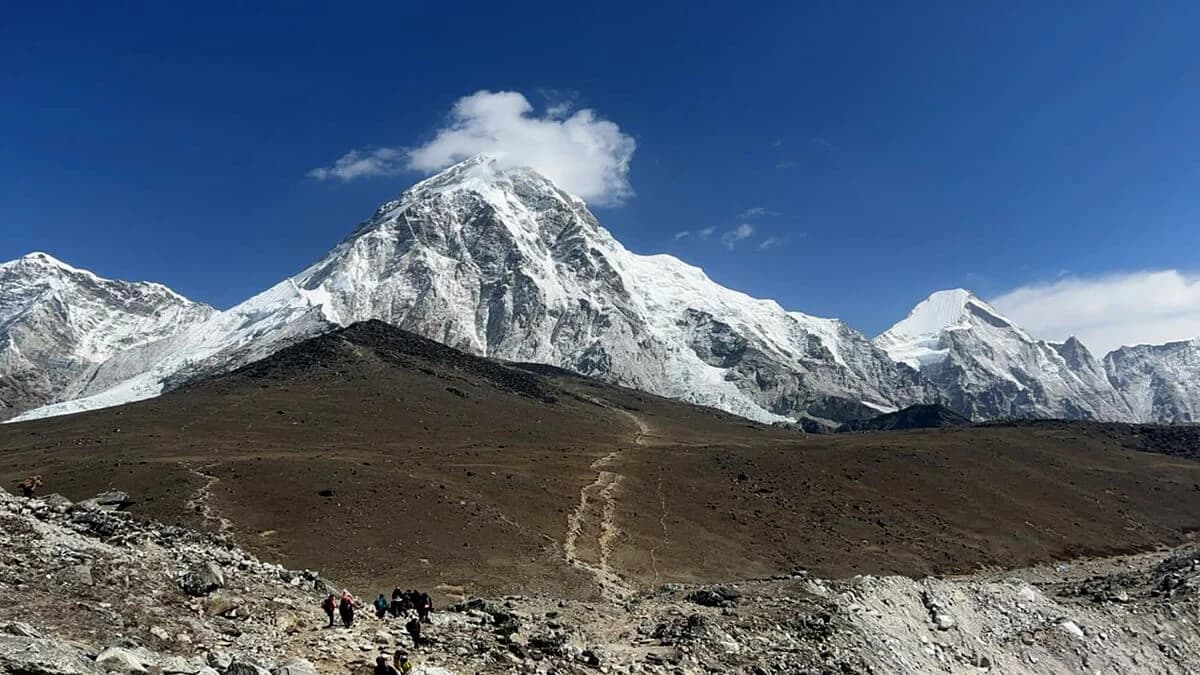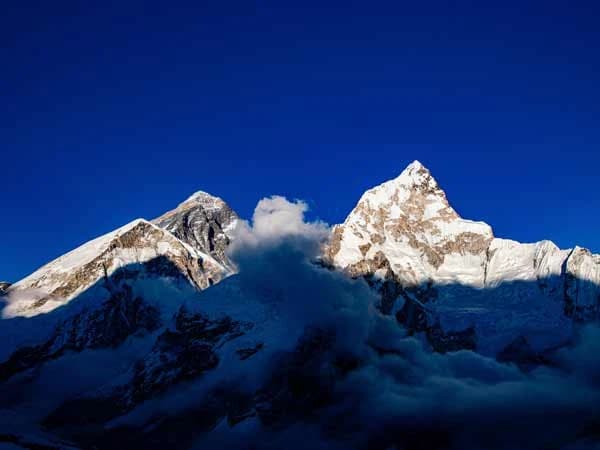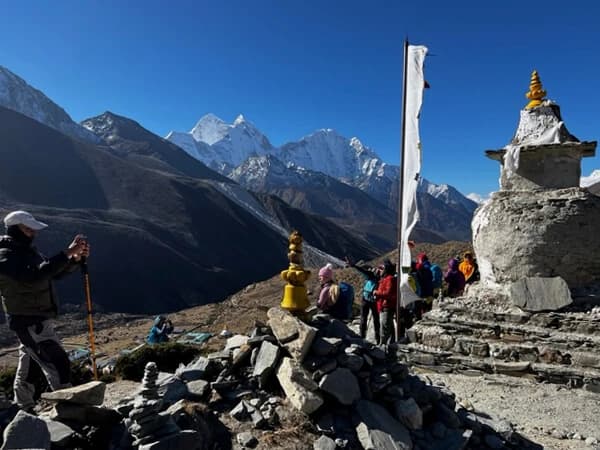Everest Three Pass Trek with Everest Base Camp – A Complete Khumbu Himalayan Journey
The Everest Three Pass Trek, combined with the classic Everest Base Camp (EBC) journey, is a comprehensive and thrilling high-altitude adventure that showcases the best of Nepal’s Sagarmatha National Park—a UNESCO World Heritage Site. This route is designed for seasoned trekkers seeking not only to tick Everest Base Camp off their bucket list but also to explore the less-traveled, remote alpine trails that connect the iconic passes of Kongma La (5,535m), Cho La (5,420m), and Renjo La (5,360m).
Unlike the standard EBC trek, the Three Passes route forms a challenging circular loop, granting you access to hidden valleys, glacial lakes, and dramatic ridge walks with jaw-dropping panoramas. Along the way, you'll cross roaring rivers, traverse high-altitude glaciers, and climb above the clouds, where every turn reveals the towering shapes of Mount Everest (8,848.86m), Lhotse (8,516m), Makalu (8,481m), Cho Oyu (8,201m), Ama Dablam, and many other lesser-known giants like Cholatse, Thamserku and Taboche.
The Everest Three Pass adventure offers more than just natural beauty—it's a deep dive into the rich spiritual and cultural heritage of the Sherpa people, the legendary guardians of the Khumbu. Visit the sacred Tengboche Monastery, nestled at 3,867 meters, and its lesser-known counterpart, Pangboche Monastery, believed to be over 500 years old. These ancient sanctuaries are steeped in Tibetan Buddhist tradition and offer a peaceful contrast to the physical intensity of the trek. While in Pangboche, hike to Ama Dablam Base Camp for a tranquil atmosphere and natural allure. which is famous among the trekkers and climbers, offers the stunning views of the Himalayas and serves as part of the classical Everest Base Camp routes.
Everest Three Pass Trek Highlights
- A scenic flight to and from Lukla, the gateway to the Khumbu.
- Acclimatization stops in Namche Bazaar, the bustling heart of Sherpa Trans Himalayan trade and cultural center.
- A side trip to Gokyo Lakes and the Gokyo Ri viewpoint (5,357m), offering one of the finest panoramic views in the Himalayas.
- An optional hike to Ama Dablam Base Camp, ideal for trekkers who want a more intimate experience with the jewel of the Himalaya.
- Enjoy the immersive local experiences—from yak caravans, alpine farming villages to prayer-flag-draped passes and spinning mani wheels.
Whether you’re chasing summits or stories, the Everest Three Pass Trek is a once-in-a-lifetime expedition that combines physical endurance, spiritual immersion, and breathtaking natural beauty into a single, unforgettable journey.
Of course, the high-altitude three-pass trek in the shadow of numerous mountains creates lifetime memories and teaches us peace of mind, compassion, and persistence.
Must-Visit Places on the Everest Three High Passes Trek
The Everest Three Passes Trek is more than just a physical challenge—it's an immersive journey through the cultural heartland of the Khumbu, offering unmatched views of towering Himalayan giants and a deep dive into the traditions of the Sherpa people. Starting and ending in Lukla, the trail winds through picturesque villages, Tibetan Mantra engraved Mani Wall, spiritual sanctuaries, glacial lakes, and sky-high mountain passes. Here are the key places you absolutely shouldn't miss:
Lukla Village & Tenzing-Hillary Airstrip – Your Gateway to Everest
Your Everest High Pass adventure begins with an exhilarating flight from Kathmandu to Lukla, often described as one of the most thrilling air routes in the world. Set dramatically against a backdrop of rugged peaks, the Tenzing-Hillary Airport boasts a short and steep runway that lands you right into the heart of the Himalayas.
Lukla, is more than just a starting point—it's a lively Sherpa village where you can get the first sights of mountain culture, stock up on gear, and prepare for the journey ahead.
Namche Bazaar – Cultural Hub & Acclimatization Paradise
Often called the Sherpa capital, Namche Bazaar (3,440m) is a bustling trade center perched on a natural amphitheater. Namche Bazaar is also an ideal acclimatization stop. Explore the vibrant Trans-Himalayan market, the Sherpa Museum, Sagarmatha National Park Headquarters, and Namche Monastery.
During your stay at Namche, embark on a day hike to:
Syangboche Airstrip and the Everest View Hotel (3,790m) for jaw-dropping panoramas.
Khumjung Village, home to the Hillary School and a monastery that houses a so-called Yeti scalp.
Sherpa Culture – A Way of Life at the Roof of the World, Sightseeing with personal Guide
The trek is about the people just as much as it is about the Mountain. The Sherpas, renowned for their high-altitude expertise, follow Tibetan Buddhism and maintain a deeply spiritual way of life. Throughout the journey, you’ll see prayer flags, mani stones, and ancient monasteries that reflect their devotion. Visiting homes, interacting with locals, and attending festivals (if timed right) provide a unique chance to connect with centuries-old Himalayan traditions.
Kongma La Pass (5,535m) – The Highest and Most Challenging
Rising above Dingboche of Chhukung Valley, Kongma La is the highest of the three passes and one of the most demanding sections of the trek. But the effort is more than rewarded—expect sweeping views of Everest, Lhotse, Makalu, Nuptse, Ama Dablam, and glacial lakes shimmering below. This pass sets the tone for the high-mountain wilderness that defines the Three Passes journey.
Everest Base Camp & Kala Patthar – Touch the Legends
No Everest region trek is complete without a visit to Everest Base Camp (5,364 m). Stand where mountaineering legends have stood, and take in the Khumbu Icefall at the foot of the world’s tallest peak. Though Everest hides from view here, a short climb to Kala Patthar (5,545m) reveals a spectacular 360-degree panorama, including Everest, Pumori, and Lhotse. Sunset or sunrise from Kala Patthar is a memory that will stay etched in your soul forever.
Cho La Pass (5,380m) – Glacier Crossing & Alpine Drama
Linking Dzongla with the Gokyo Valley, Cho La is a dramatic mountain pass requiring an early start and crampons if icy. The glacier crossing and snowy ascent are exhilarating, and once atop, the reward is a panoramic spectacle of jagged ridgelines and glistening ice fields. Cho-la (5,380 m) stands as a col of Chhukung Valley and Gokyo Valley.
Gokyo Valley & Lakes – Turquoise Jewels in the Himalayas
Nestled in a tranquil valley, the Gokyo Lakes are among the highest freshwater lake systems in the world. The six major lakes—Gokyo Lake, Thonak, Gyazumpa, Tanjung, Kyajumba, and Ngozumpa—are fed by glacial melt, their brilliant turquoise hues contrasting against rugged stone and snow.
From Gokyo Ri (5,357m), you can witness one of the most spectacular panoramas in Nepal, showcasing Everest, Cho Oyu, Lhotse, Makalu, and the sprawling Ngozumpa Glacier 36 km long glacier in Nepal.
Renjo La Pass (5,388m) – Solitude & Scenic Perfection
The final of the three passes, Renjo La, connects the Gokyo Valley with the Marlung and Thame Valleys. Less frequented than the other routes, this trail offers serene isolation and surreal vistas of the entire Everest range, far from the usual crowds. The descent toward Thame, a historic Sherpa village, is a beautiful journey through spiritual landscapes dotted with monasteries, the Mantra engraved prayer flags, and stone walls
How difficult is the Everest Three High Pass Trek?
Everest Three Pass Trek is the second to climb any Mountains in Nepal. However, we do recommend having some high-altitude trekking experience before embarking on this high-pass trek. Solo trek is also possible but a professional Leader is recommended for exploring the wilderness, who understands the personal freedoms of clients to set their own pace, choose the off-the-beaten route, and discover the hidden gems of the Himalayas. We, at Global Eco Trails strive to make your trek memorable with highly skilled guides with meticulously planned itineraries. The high passes trek involves 6/7 hours of walking.
The Benefits of Booking Everest Three-Pass Trek With Us
- We supply our Guide and porter with food, accommodation, and clothing on the trek plus insurance and good working wages.
- Safety measurement including meticulously planned itinerary with extra days for better acclimatization.
- Interact with our support team and local people about the culture and traditions.
- Complimentary airport pick-up and drop services with free luggage storage.
- Complementary sleeping bag and down jacket with company token of Love.
- Free luggage storages at our office.
When is the Best Time for Everest High Pass Trek in Nepal?
The favorite time for Everest High Passes Trek is the Autumn (September to November) and the second most rewarding time is Spring (March, April, May and June), are the best time for Trekking and Mountaineering. These falls and Springs offer clear skies and stable weather. Summer (July to Mid-September) in Nepal is Monson season, with high rainfall and wet trails with limited views, maybe you will get lucky with the weather. The winter season (December to February) has fewer crowds and wonderful views, but it is freezing!!
Everest Three High Pass Trek Estimate Cost
The cost of the Everest 3-pass trek depends on several factors- trek duration, group size, trekking season, mode of transportation, and standard of Accommodation. However, The Everest Three Pass Trekking cost range from $ 1400/ USD Per person. Nonetheless, some key factors determine the price for the Everest Three Pass Trek as below.
Trekking seasons: The Price varied on the trekking season. March to May and October to November could little higher than other seasons. The price might be lower in winter and summer.
Trek Group Size: The Everest Three Pass Trek price is usually lower when you are traveling in a group.
Type of services: The price depends on the type of services that you are looking for. Having a solo guide and porter, a private room with an attached bathroom, fly in and out by helicopter.
Trek duration: The price of the Everest Three Pass Trek depends on the Trekking length as well.
Everest High pass Counterclockwise Itinerary
Our experts recommend a counterclockwise route for the Everest Three Passes trek to lower the risk of Acute Mountain Sickne. The Everest Three Passes Trek can be done in either direction, going counterclockwise is consider the best option. This approach allows you for better acclimatization and helps reduce the chance of attracting high altitude sickness.
Lastly, Enjoy the breathtaking views of the mountains and honor yourself by completing it. Trek on the formidable Himalayan terrain of the Everest region. Notice the Everest Summiteers' Villages en route. Spend some time in the monasteries purifying your soul and enjoying the morning sun shining through the sky towering mountain peaks. You are recommended to choose a government-registered company, affiliated with TAAN for your safety adventure. Global Eco Trails is a well-recognized trek company established by a bunch of mountain experts who collect decades of trekking and mountaineering experience. We are offering customer care services at a fair price. Contact our experts for a hassle-free Everest Three Passes Trek.

